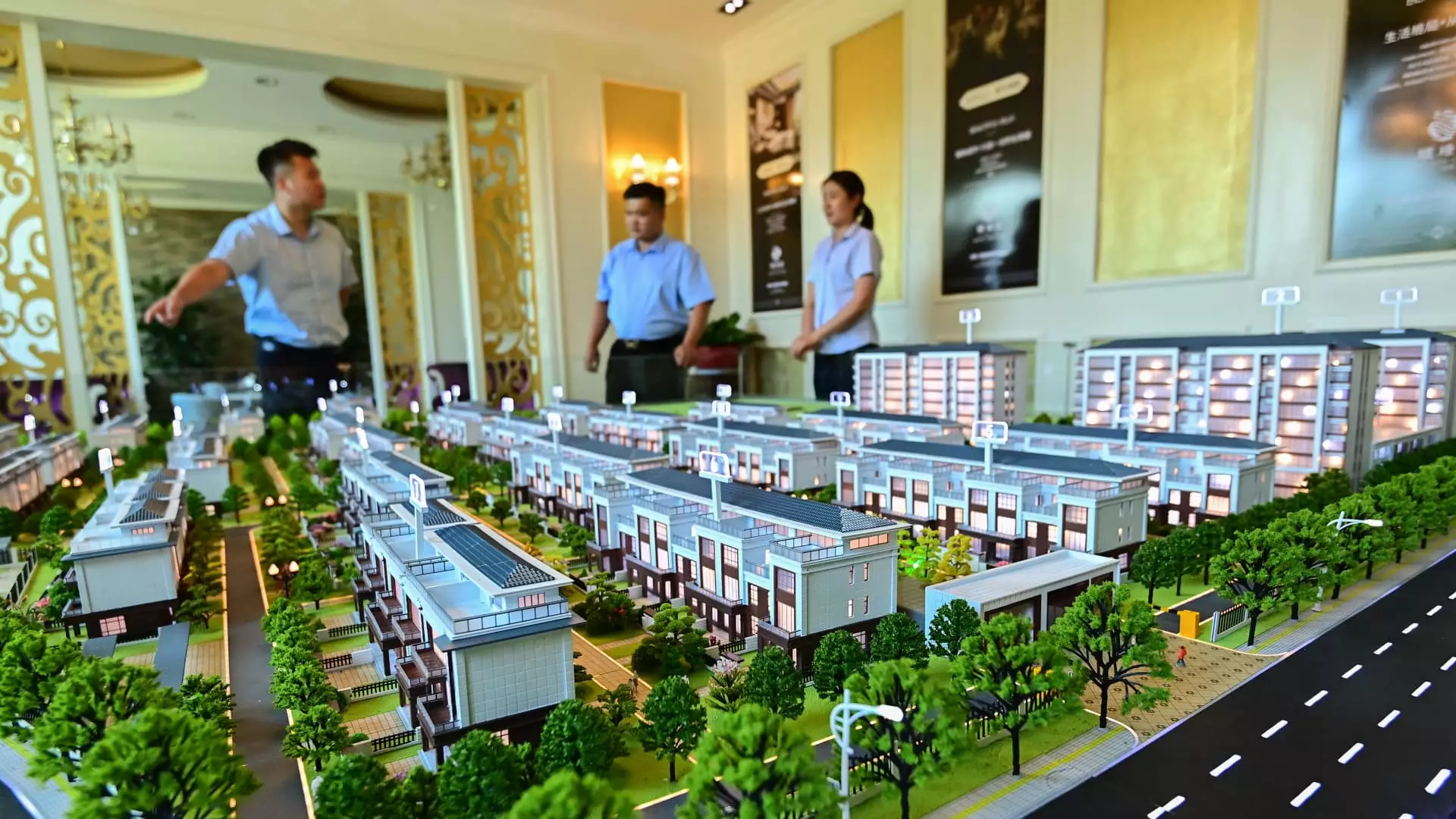China’s once-booming real estate sector now stands on the precipice of an unprecedented crisis, exacerbated by a troubling demographic trend: a dwindling population. The potential implications of this trend are staggering, as Goldman Sachs underscores that new demand for homes in urban areas could plunge to under 5 million units annually—merely one-quarter of the staggering 20 million units recorded at the market’s peak in 2017. This downturn is far more than just a market fluctuation; it represents a systemic issue that threatens the foundations of the Chinese economy as a whole.
As of now, the population is projected to decline from 1.41 billion to below 1.39 billion by 2035, driven largely by an increase in deaths and a plummeting birth rate. The dual forces of fewer births and a growing elderly demographic paint a dire picture for housing demand. What is particularly alarming is that this demographic shift, while unfolding gradually, will compound the woes of the real estate sector, with projections highlighting a crippling decrease in housing demand by 0.5 million units annually in the 2020s and an even greater drop of 1.4 million units in the 2030s.
The Age of Apathy: Childbearing Concerns
Despite concerted efforts by the Chinese government to reinvigorate birth rates through financial incentives and policy shifts, the reality is that these measures fall short in tackling the root causes of declining fertility. A culture that increasingly favors individualism, coupled with the rising economic costs associated with child-rearing, acts as a powerful deterrent for young couples contemplating starting families. The stark decline in kindergarten enrollment—36,000 institutions shuttering in just two years—serves as a harbinger of the far-reaching implications for the education sector and beyond.
The growing sentiment among young professionals to prioritize career advancement over family life further complicates matters. Many choose to delay marriage and childbirth, perpetuating the design of a society where educational and career aspirations take precedence over traditional family structures. Economists like Tianchen Xu from the Economist Intelligence Unit argue that Beijing’s policies fail to resonate with the realities faced by young families today.
Housing Market: The Ripple Effects
The real estate market, which once thrived on inflated demand for school-adjacent properties, is now experiencing a seismic shift. Parents who once paid premium prices for homes based on proximity to quality schools now find themselves grappling with depreciated values as the demographic changes ripple through the housing market. A poignant example comes from a mother in Beijing who reported losing 20% of her property’s value in merely two years—an outcome that starkly contrasts with expectations set forth in more prosperous times.
As the number of elementary schools dwindles, so too does the allure of buying property as an investment for the future. The reluctance of young couples to expand their families translates directly into a reduced market for housing, a reality that was once considered unthinkable. Analysts, including William Wu from Daiwa Capital Markets, warn that the days of soaring prices fueled by schooling ambitions are rapidly waning, replaced by a sobering acknowledgment of a new economic norm.
The Central Government’s Struggle
Despite government efforts aimed at reversing the downward spiral of the real estate sector, these measures seem more like band-aids on a gaping wound. The rapidity with which new home prices fell, marking the sharpest decline in seven months as of May, reflects an entrenched stagnation rather than a temporary setback. Goldman Sachs predicts that many property owners will shift from investors to net sellers, driven primarily by inflated expectations of further price drops.
Although it is true that urbanization could serve to cushion some of these demographic blows, Wu’s observation that the real demographic challenges facing the housing market may take decades to fully manifest underscores the complexity of the situation. The illusion of a swift recovery may provide short-term comfort, but the realities of a shrinking populace are eroding the foundations of a once-stable economic pillar.
As we stand on this precarious edge, China’s housing landscape starkly mirrors a nation grappling with its identity. The disconnect between long-held aspirations of prosperity and the stark decline in demographic vitality reveals a growing chasm that demands urgent reformative action. The question remains: Can the monumental forces of change be reconciled with policies that acknowledge the changing psyche of a nation? Or will China find itself trapped in a cycle of decline, wrestling with the ghosts of aspirations lost?

Leave a Reply